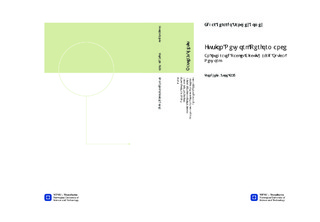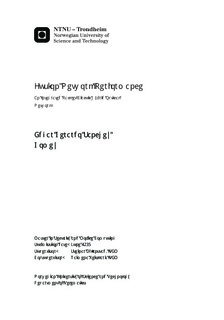| dc.contributor.advisor | Bjørnstad, Steinar | nb_NO |
| dc.contributor.advisor | Veisllari, Raimena | nb_NO |
| dc.contributor.author | Sanchez Gomez, Edgar Gerardo | nb_NO |
| dc.date.accessioned | 2014-12-19T14:15:30Z | |
| dc.date.available | 2014-12-19T14:15:30Z | |
| dc.date.created | 2013-09-24 | nb_NO |
| dc.date.issued | 2013 | nb_NO |
| dc.identifier | 651215 | nb_NO |
| dc.identifier | ntnudaim:8788 | nb_NO |
| dc.identifier.uri | http://hdl.handle.net/11250/262848 | |
| dc.description.abstract | IP traffic increase has resulted in a demand for greater capacity of the underlying Ethernet network. As a consequence, not only Internet Service Providers (ISPs) but also telecom operators have migrated their mobile back-haul networks from legacy SONET/SDH circuit-switched equipment to packet-based networks. This inevitable shift brings higher throughput efficiency and lower costs; however, the guaranteed QoS and minimal delay and packet delay variation (PDV) that can only be offered by circuit-switched technologies such as SONET/SDH are still essential and are becoming more vital for transport and metro networks, as well as for mobile back-haul networks, as the range and demands of applications increase. Fusion network offers both an Ethernet wavelength transport and the ability to exploit vacant wavelength capacity using statistical multiplexing without interfering with the performance of the wavelength transport by dividing the traffic into two service classes while still using the capacity of the same wavelength in a wavelength routed optical network (WRON):1. A Guaranteed Service Transport (GST) service class supporting QoS demands such as no packet loss and fixed low delay for the circuit-switched traffic.2. A statistical multiplexing (SM) service class offering high bandwidth efficiency for the best-effort packet-switched traffic. Experimentation was carried out using two TransPacket's H1 nodes and the Spirent TestCenter as a packet generator/analyzer with the objective of demonstrating that the fusion technology, using TransPacket's H1 muxponders allow transporting GST traffic with circuit QoS; that is with no packet loss, no PDV and minimum delay independent of the insertion of statistically multiplexed traffic. Results indicated that the GST traffic performance is completely independent of the added SM traffic and its load. GST was always given absolute priority and remained with a constant average end-to-end delay of 21.47 µs, no packet loss and a minimum PDV of 50 ns while SM traffic load increased, increasing the overall 10GE lightpath utilization up to 99.5%. | nb_NO |
| dc.language | eng | nb_NO |
| dc.publisher | Institutt for telematikk | nb_NO |
| dc.title | Fusion Network Performance: An Integrated Packet/Circuit Hybrid Optical Network | nb_NO |
| dc.type | Master thesis | nb_NO |
| dc.source.pagenumber | 97 | nb_NO |
| dc.contributor.department | Norges teknisk-naturvitenskapelige universitet, Fakultet for informasjonsteknologi, matematikk og elektroteknikk, Institutt for telematikk | nb_NO |

